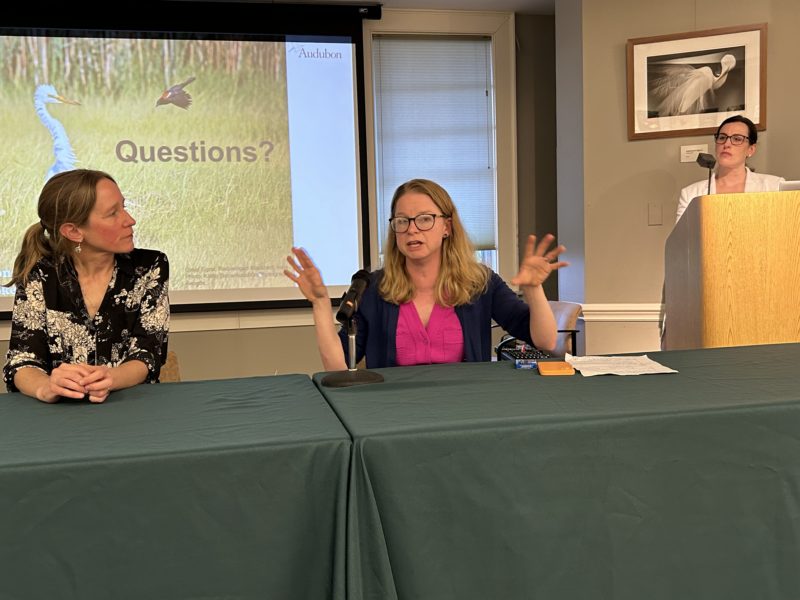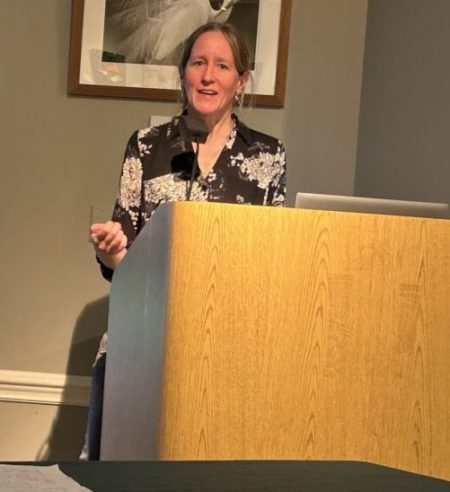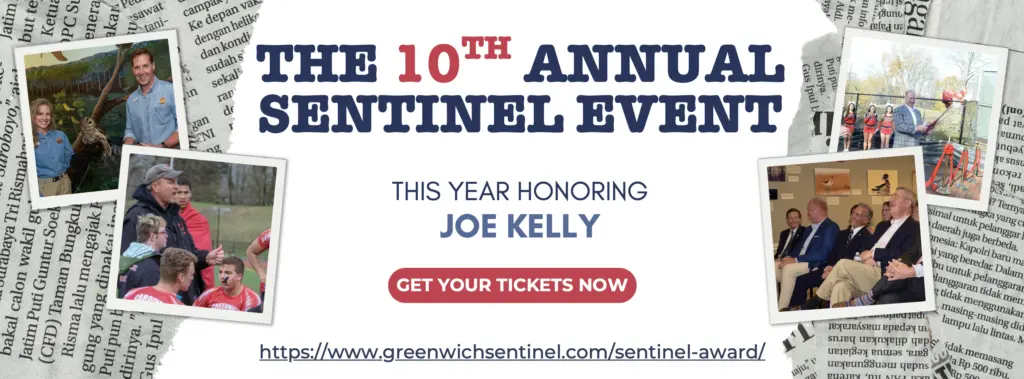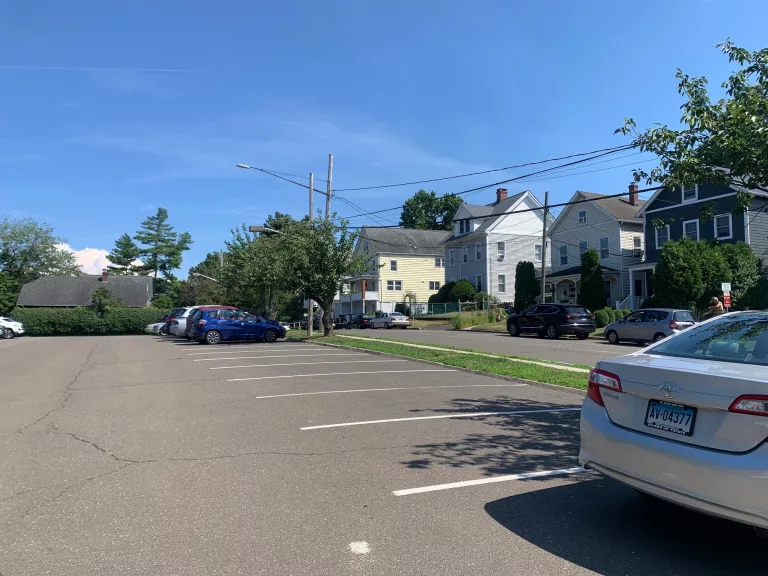
By Anne W. Semmes
At Audubon Greenwich this past Monday evening the talents and initiatives of two women to combat and counter the effects of climate change on our Connecticut coastlines was impressively on display. Laboring on behalf of Audubon Connecticut, they were invited to address “Coastal Resilience in a Changing Climate” by the town’s initiative – Pollinator Potluck for the last program of its 2023/2024 speaker series.
Rochelle Thomas, director of Greenwich Audubon, introduced first Corrie Folsom-O’Keefe, director of Bird Conservation for Audubon CT, “the state office of the National Audubon Society. She oversees Audubon’s coastal stewardship and resilience efforts in Connecticut. She leads the Audubon Alliance for Coastal Waterbirds, which assists CT DEEP Wildlife Division with the management of Piping Plover and other beach nesting birds.”
Victoria “Vicky” O’Neill was then introduced as the initial director of Coastal Resilience for Audubon CT/NY as of last November. “In this new role,” told Thomas, “She will work with coastal communities to tackle sea level rise through habitat restoration, land protection, and the installation of nature-based solutions…Most recently Vicky was the Long Island Sound Study Habitat Restoration and Stewardship Coordinator…working with Connecticut and New York partners around the Sound to restore coastal habitat and wildlife.”
O’Neill began, “Climate change and climate issues are a major focus for our organization. And when you’re talking about climate change, you are talking about resiliency, and the coastal habitat is the forefront of the impact of climate change. And if you live in Greenwich, if you live in Westchester, you’re on the waterfront. What you do on your property impacts our coastal habitats…and one of the most important ones we’re going to talk about a lot today are tidal wetlands.”
“They’re home to a lot of awesome birds,” added Folsom-O’Keefe. “We’ve got the Salt Marsh Sparrow, which can be found in our salt marshes across Connecticut, the Piping Plover and the American Oystercatcher that use our beaches and dunes and offshore islands. Birds like the Semipalmated Sandpiper that come through Connecticut in thousands in spring and fall, the Long-tailed duck that takes advantage of offshore waters, diving amongst those field grass beds to find their food. And then you have birds like the Purple Martin that are taking advantage of our coastal grasslands and coastal open areas along the coast.”

But those coastal habitats are important “for a lot of other reasons other than just birds,” continued Folsom-O’Keefe. “They absorb wave energy and floodwater during storms, whether it is a salt marsh, an estuary barrier, beaches, offshore islands…when we have a big storm they are absorbing a lot of the energy and in the case of salt marshes, they’re absorbing a lot of the flood waters too. And that protects people who live along the shoreline.”
Add to that she said, “Our salt marshes and estuaries remove a lot of nitrogen from water. So, the Connecticut River starts in Canada, goes all the way down to Long Island Sound and there is a lot of opportunity for pollutants like nitrogen and other chemicals to get into the water. But our marshes in particular are really good at taking those pollutants out of our water so that the water that we get to swim in and enjoy along the Sound is nice and clean.”
Those tidal wetlands also play a critical role in carbon sequestration, told Folsom-O’Keefe. “So right now in our salt marshes, the grasses are starting to grow and, in the fall, when they die back and sort of pile up on the marsh, they will gradually become part of the layers of mud that are below the marsh grasses and there is a lot of carbon that is sequestered in those areas. And lastly, marshes are super important to our shellfish and fish industry. But they have historically and are currently facing a number of threats.”
So, the time came for O’Neill to address those positive approaches to our endangered coastal habitats, and how can we make them more resilient.
“Restoration is one option,” she began, and “Nature-based solutions is another option, and conservation easements, which is when there’s sea level rise and marshes are looking to migrate inland. We know there are certain locations adjacent to marshes that maybe are undeveloped, that are good marsh migration corridors.”
O’Neill told of the restoration of the Great Meadows Marsh in Stratford, CT. “This particular marsh is a very large site, but it has been completely degraded over time…So a lot of fill was placed on top of the marsh and this altered its hydrology. In turn, a lot of invasive species came onto the fill, like phragmites. …luckily Audubon was able to team up with Connecticut, DEEP, NOAA, US Fish and Wildlife Service and Stratford to address the issues at Great Meadows Marsh… A lot of volunteers, a lot of agencies for a successful project.”
Another project about to happen said O’Neill was at Hammonasset Beach State Park. “On the eastern end of the park at the point, there’s a lot of erosion that’s going on…that dune has eroded over time. So, with the combination of sea level rise, these more intense storms, climate change, we’ve wiped out that protected barrier in front of the marshes there. And now the Sound is breaking through and moving into the back marsh, flooding it…So, we are working on designing what to do for the site, and this could be a combination of some sort of nature-based feature.”
O’Neill then shared a striking example of a nature-based solution located at the shoreline of Stratford Point. “So, if you’ve ever been to this property in Stratford, you’ve probably seen these interesting structures along the shoreline – they look like something out of Mars. But they’re really cool engineered structures that are called reef balls. And so, at this particular site, the coastline was eroding away, the marsh disappeared, and they wanted to stabilize the coastline. It was getting beaten by these storms that were coming through. And the sea level rising was obviously an issue.” Those reef balls provided structure to the coastline, “but they also provide habitat opportunities.” Those holes allow “fish and crabs to move in to hide… Also, oysters will grow on them, and mussels… At the same time, they’re providing that wave break, slowing the water down along the shoreline, depositing the sediment behind the reef ball, and they were able to plant salt marsh right behind.” That project won Best for Shore Area by the American Shore and Beach Preservation Association told O’Neill. “So, definitely check it out when you’re in Stratford.”
Folsom-O’Keefe concluded with the wish that those present who “had this chance to learn about coastal resilience, the challenges our coastal habitats are facing, and the solution ideas to make sure that they’re here for the years to come” would share what they learned with others. “There are a lot of people out there that don’t understand the impacts that climate change is having on our coastal habitats. And the more we can build people’s understanding and knowledge, the more likely that when somebody proposes, ‘Hey, let’s put a living shoreline in this area,’ that they’re going to be ‘Actually that’s a really smart idea. We should do that.”







